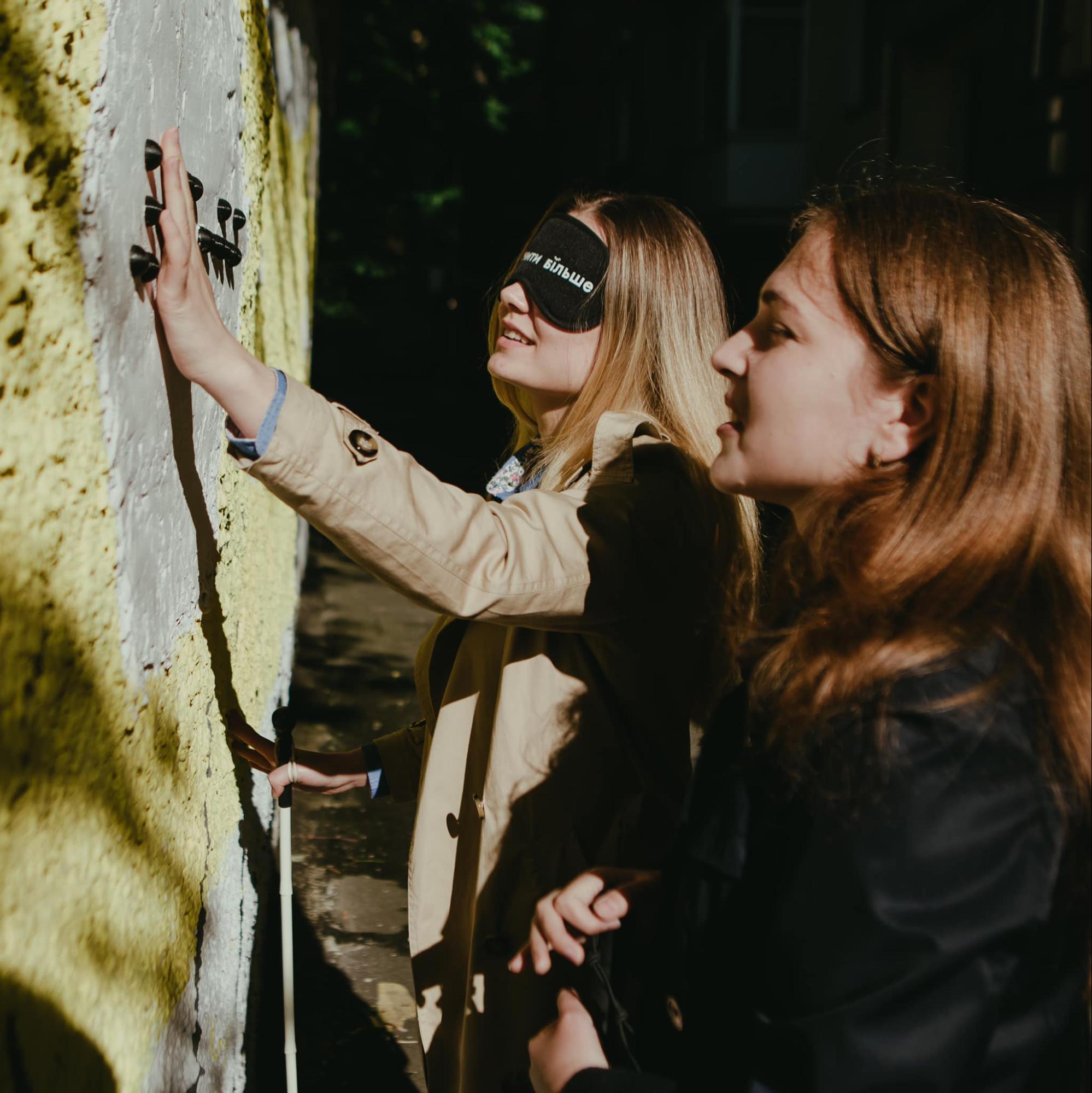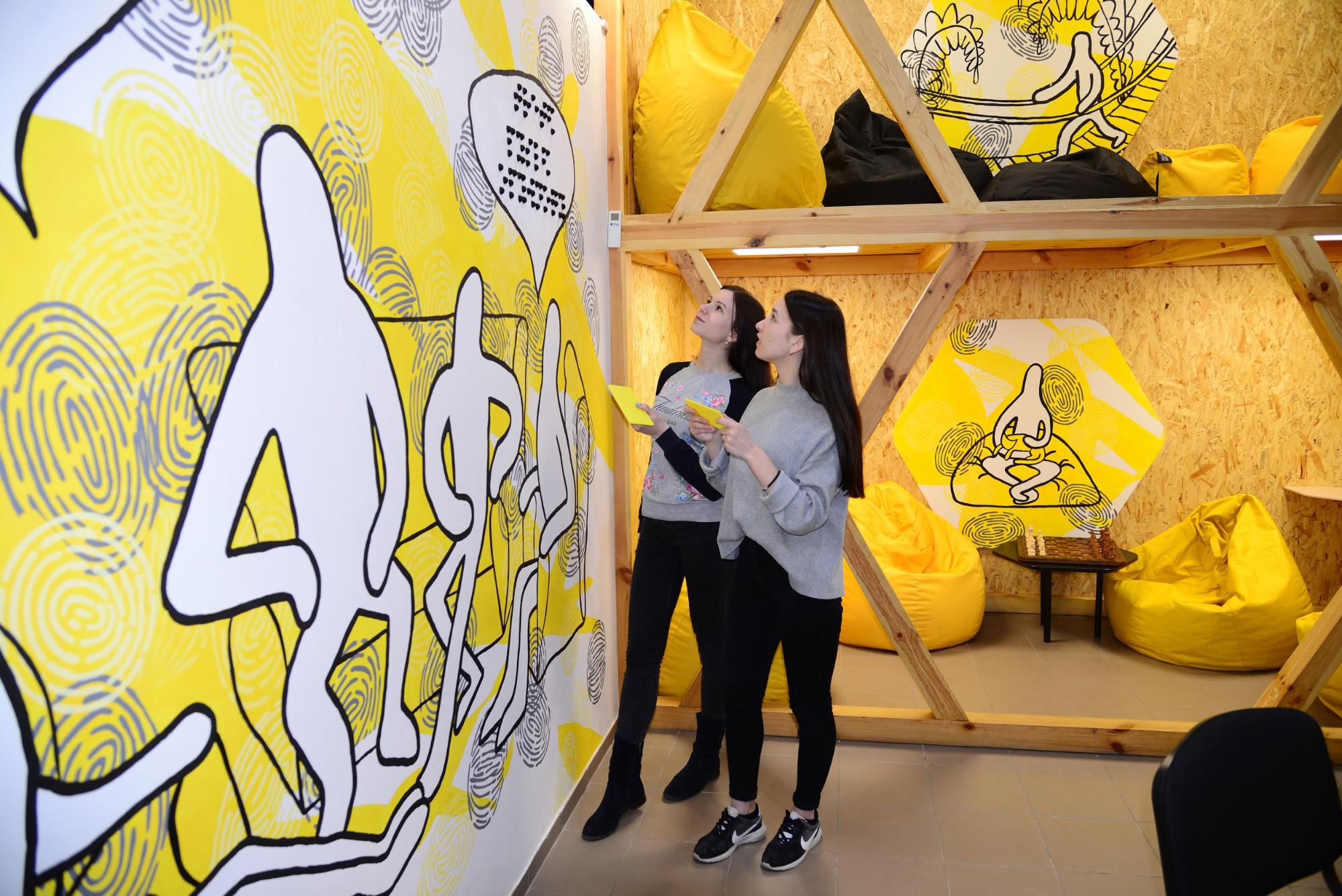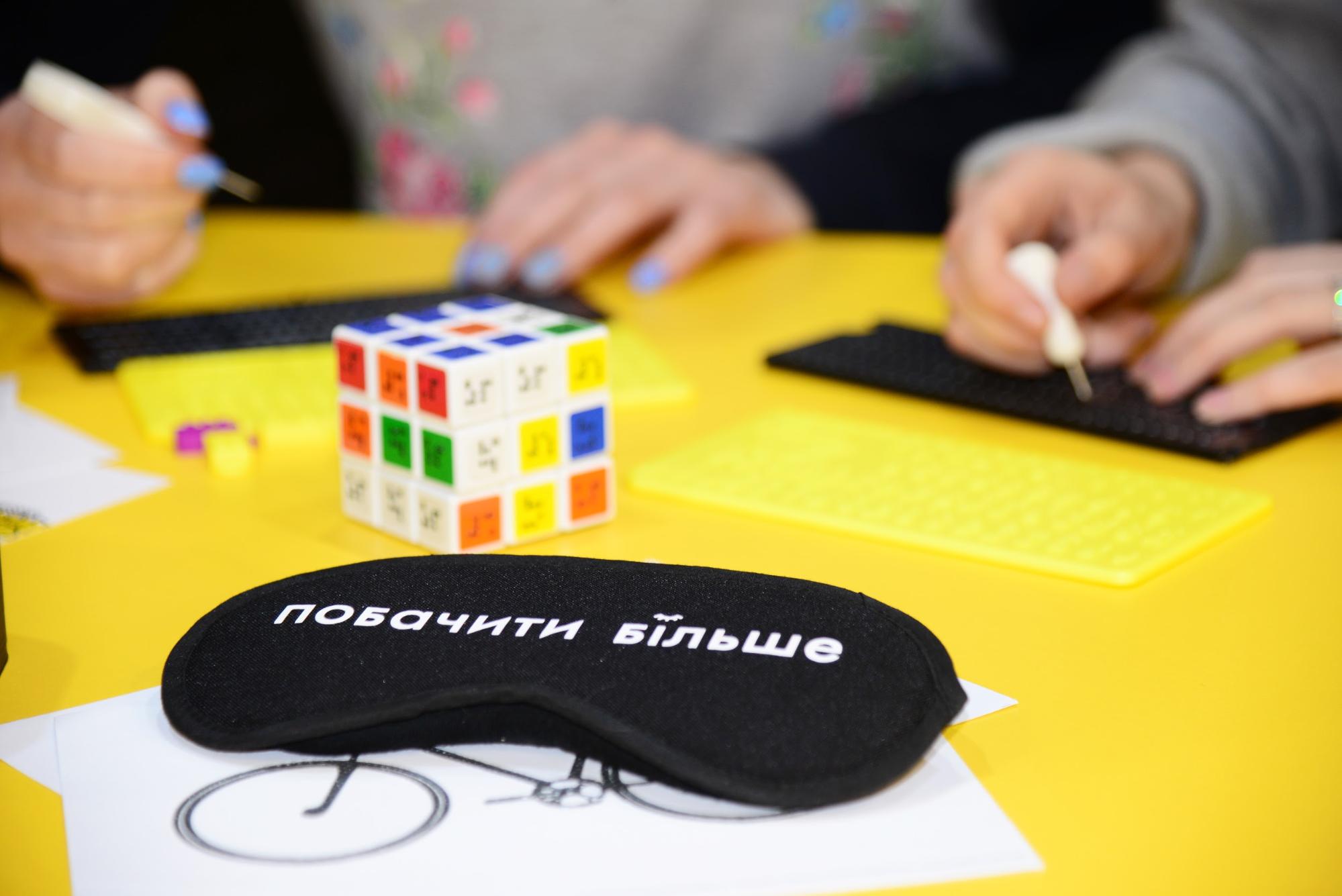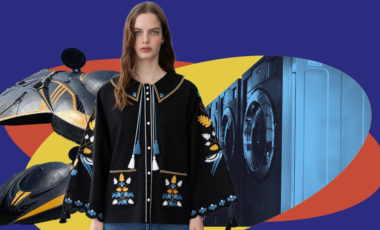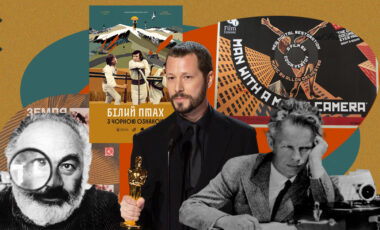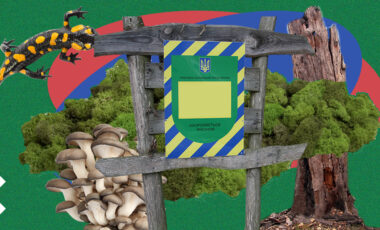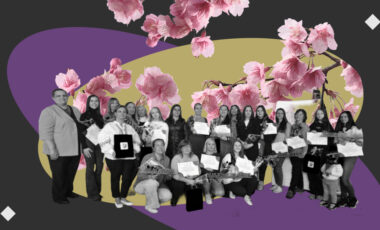Experience the world blinded: how an inclusive museum in Kyiv does tours in complete darkness
… And walks around the city with your eyes blindfolded. We explain why we need such an initiative, how it makes us understand the world of the visually impaired, and why it helps the blind.
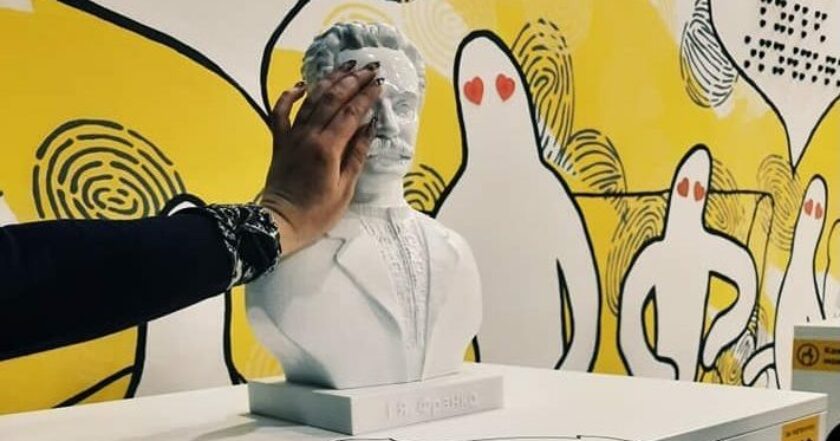
Today, when it comes to accessibility, most are thinking about the number of ramps and the need for transportation for people with disabilities, although the concept of accessibility includes more than just the ability to move freely. First, it means creating an environment where a person with any abilities could finally become as free as possible, feel comfortable, have no obstacles at the every-day level, communicate, work, travel, actively relax and have fun.
The problems of blind people include not only small pensions or difficulties in finding a decently paid job. Barriers lurk in wait for the blind everywhere: every trip to the store, walk, pharmacy, and work turns into a quest. Urban space, formed without considering visually impaired people, the logic of their movements, and peculiarities of their needs, changes slowly, localized, and often as a formality. For instance, the clinic sets up an information stand for the blind, but to reach it, you need to go around the rack with plants; in front of the entrance to the store, there seems to be a ramp, but inside it, there are also a few steps, and no installed ramp, no railings. Sometimes such an imaginary "concern" can look like bullying; for example, in the Ternopil region, a special Braille sign was installed in a pension fund branch. And it'd be great. But the font, whether for beauty or the sake of economy… was covered under glass.
Obviously, such situations arise because support systems for people with disabilities are created by people who cannot adequately understand and evaluate their effectiveness.
How to understand?
We receive 80% of information about the world through our eyes. It's very hard for persons with excellent eyesight to "look" at the world through the eyes of a blind person. We cannot do it, at least because blind people perceive the world through other senses. These are hearing, touch, taste, smell, and a sense of balance and proprioception, i.e. awareness of one's own body.
Special projects help people understand the world of the blind, try to forget what vision is at least for an hour.
In 2017, the first interactive museum "Three After Midnight" emerged in Ukraine: a place where all tours happen in pitch darkness and are accompanied by blind guides. Every visitor of the museum can learn about the possibilities of their body in complete darkness during the tour and feel for themselves what problems the blind face. The Three After Midnight Museum is a social project created by Alina Marnenko and Volodymyr Didus, which spends the funds from selling tickets for inclusive tours on guides' salaries and events for visually impaired adults and children.
How did it all start?
Alina and Volodymyr heard about similar museums from acquaintances who went on tours to Germany. An exhibition "Dialogue in the Dark" has been there since 1988; it's designed to give people with sight an idea of the world where the blind live. Emotions ran high; the friends said that the tour made them re-evaluate many things in their lives and change their attitude towards other people. "I was very impressed," Alina Marnenko tells Rubryka, "that such a brief experience can affect people so much. The idea niggled at me, I really wanted to feel it for myself, and so that such a project existed in Ukraine. And after some time, my friend and I decided to open such a museum ourselves."
The project initiators' central decision wasn't to go to other museums until they opened their own, so as not to limit themselves. So they started the museum entirely on their idea of what emotions it should evoke. They immediately decided that everything on the tours should be as close as possible to reality. For instance, at the "street" location in the museum, there are real cobblestones and traffic lights, in the "apartment," one can experience a working refrigerator, and cabinets with things. Even the temperature in different locations is different! Everything helps people to forget that they're on a tour in the created space and delve into the atmosphere. An interesting feature of the Kyiv Museum is that guests don't see a guide till the tour; they get acquainted with him/her in the dark. In this way, they switch from visual perception and try to feel the person, first.
Dark times always reveal good people. © Erich Maria Remarque
The museum was opened at its own expense. Approximately six months passed from the moment they decided to open it. The most challenging thing was to present the museum correctly; after all, Ukraine didn't have such projects, and it was crucial to explain to people what it is, why, how it differs from the usual museums or quests.
"Before the opening," Alina recalls, "I thought long and hard about the name. I wanted to choose something catchy, but with meaning. And somehow I came across the fact that 3 a.m. is considered the darkest time of the twenty-four hours. So the choice was obvious, "Three After Midnight." We've created complete darkness on our excursions. Some visitors sometimes even thought that we were conducting tours at night, at three o'clock, but we don't even need the actual night: our excursions are completely dark at any point, from 10 a.m. to 10 p.m."
How to feel in another person's shoes on the tour?
Tours in the museum strike a chord with anyone. They change values and set priorities. It's a completely unusual experience. It's hard to describe it in words until you feel it yourself.
Imagine a large space (150 sq.m.), very similar to everyday life, with the street, apartment, nature, with sounds and smells. And you find yourself in complete darkness, your task is to repeat the usual things without the help of sight, somehow cross the road with a traffic light, to focus on hearing, find the door to your apartment by touch. Other senses are exacerbated and people realize how little they are used in everyday life. The blind guide is always nearby and helps and answers all questions.
Visitors actually ask a lot of questions, because people don't even consider a lot of things until they face them first-hand. For instance, how hard it is to cross the road if the traffic light is without sound, or how inconvenient it is to park a car across the sidewalk. And how do blind people use public transport, prepare and buy food or clothes?
Only when it is dark enough can you see the stars. © Martin Luther King Jr.
All 90 minutes of a tour, art exhibition, quest for children, or a walk through the city are surrounded by darkness: deep, opaque, absolute. Such darkness that not only is it impossible to see silhouettes but even to understand whether your eyes are closed.
In complete darkness, everything around becomes the fruit of imagination. The key thing is to learn to feel, relying on touch, smell, hearing, and taste. So you can see more without looking.
According to the museum's co-founder, one of the biggest advantages of the "Three After Midnight" is that each of the proposed programs of full immersion in the world of the blind frees from the need to explain important things to people. The museum gives everyone a unique opportunity to receive new experiences and draw their own conclusions. And then change your attitude and behavior.
They started with one tour "Walk in the Dark." And now there are several completely different formats: a date in the dark for couples; a sensations quest, where you can check how well all the participants have developed sensations; art exhibitions featuring paintings, architecture and sculpture are available to touch, and a new blind city tour "Feel Kyiv."
It's important that all events are actually held in complete darkness. The museum staff managed to achieve the most realistic conditions when it's really impossible to rely on visual landmarks and the brain is forced to switch to all other senses. Therefore, you can't take anything with you on the tour, like phones or fitness trackers. So, excursions to an unusual museum can also be considered a kind of detox from gadgets.
"The first thing I did after losing my sight was climbing Hoverla"

Museum guides: Vita Yasinko, Ira Dmytruk, Yaroslav Pluta, Nailia Salimova, Ihor Kushnir, Viktoria Shevchuk
"Unfortunately," says Alina Marnenko, "many people have a rather distorted idea of the blind before getting acquainted with our project, that they're very restricted people who mostly stay at home, don't work and, of course, don't have hobbies. Tour and communication with our guides destroy these stereotypes. Moreover, instead of the "usual" feeling of pity, our guides cause only admiration and, on the contrary, motivation. Guests often say that they used to like to complain about their hard life, but now they understand how many opportunities are around us, we need to use them and live life to the fullest."
The stories of the "Three After Midnight" museum guides only confirm: loss of sight is not a sentence!
Viktoria Shevchuk: "The first thing I did after losing my sight was climbing Hoverla. In general, I enjoy swimming, yoga, going to the gym, traveling, weaving beads. I took part in a fashion show twice, swam with dolphins, galloped on horses, and rode a bicycle in tandem."
Nailia Salimova: "I played in the theater, danced, sculpted from clay, and now I combine work in the museum and the massage room. Often, people, I meet on the street, come for a tour of our museum."
Do not complain about the darkness, become a small source of light. © Bernard Werber
Ihor Kushnir: "I really like big dogs, chocolate ice cream, singing only with quality accompaniment. And I can't live without getting kicks. And I get them when my work pleases people. I like to communicate with different people, especially when it's a lot of people to whom you can convey the idea that blind people are the same as people who can see. You have the opportunity to debunk different myths, stereotypes. Besides, you can give people an understanding that sometimes the blind need help and explain how to properly provide that help."
There are currently 6 blind guides in the "Three After Midnight" team. For some, it's the primary job, others have another one. It's important that it's an interesting job giving guides a sense that they're really influencing the situation in society and changing attitudes towards the blind. "Once," adds Alina Marnenko, "one of our guides, Vika, said that perhaps the best and most useful thing she could do for the blind was to work in a museum."
Many visitors to the exhibition state in the reviews that everyone should experience an immersion into the world of darkness. The museum fully agrees with this statement. But still, there's a primary target audience: among adults, it's an active youth and middle-aged people looking not only for new entertainment in life but also new meanings, students, and the blind, and their loved ones. During the four years of the museum's existence, it was visited by about 22,000 visitors, almost half of whom were schoolchildren.
All excursions for the blind in the museum are free. Many wonders why the blind come on tours in the dark. But, in fact, for them, it's both entertainment and a unique educational moment. Here they can get acquainted with art in an accessible form, for example, learn what the Mona Lisa or the Taj Mahal look like. During its existence, the inclusive space has created 63 tactile exhibits, including sculpture, painting, and architecture.
How to experience the museum in quarantine?
With the start of quarantine in March 2020, the museum lost the opportunity to conduct tours, and unlike many other projects couldn't even conduct online broadcasts of tours, because it completely contradicts the idea of the museum.
However, the museum didn't stop working, and adapting to the new conditions, and launched two completely new formats: the online quest "5 Senses" with the blind for children and a blind walk through the city "Feel Kyiv."
If you don't want darkness, put the light on. © Osho
"Thanks to the online format," Alina Marnenko comments, "we were even able to expand our audience because usually the tours were attended by children from 8 years of age (younger are often afraid of the dark), and now we can interact with children from 4 years. At the online inter-actives, children train their 5 senses, learn new interesting facts, and get acquainted with our blind guides. It turns out that many of them didn't even know that there are people who can't see! As far as we know, we are the only ones to conduct such interactions.
Thanks to a walk through Kyiv, we've expanded the boundaries of our locations to the entire city. It's a unique opportunity to walk the familiar streets accompanied by our guide and perceive Kyiv by ear, smell, touch, and even taste. We take walks in masks and accompanied by a sighted attendant who monitors safety during the tour."
"While walking around the city, you feel a lot of unfamiliar sounds, you feel the ground under your feet. I didn't notice it before. And only now do I understand what it's like to be in the world. Seriously. When you see, you hurry, look here-there. Here you are always on," the visitor of the tour shares the impressions.
Despite all the activities, the strict quarantine didn't pass without a trace for the museum; it still has debts, but gradually returns to full-fledged work. They don't ask for special help, but there are several ways to support a social enterprise: visit tours, tell friends about the museum, and the museum also offers gift certificates for tours, because emotions and new experiences are the best gifts.
"I'm convinced," Alina Marnenko says, "social entrepreneurship should perceive itself and work as a full-fledged business, that is, have a self-sustaining business model. And we managed it before quarantine, but due to quarantine restrictions, we have significantly reduced workload. So the key goal now is to recover after quarantine, optimize all business processes and then scale in. In the fall of 2020, we planned to open a second museum in the dark (in Lviv), but due to quarantine restrictions, the launch had to be postponed to 2021.
It's very important for me to feel that what I do is useful and necessary for people. And I like to repeat that I was very lucky because we receive confirmation in the museum every day. Of course, there are many difficulties, there are moments when you feel discouraged (one quarantine is the example!), but the new reviews are enough, like "It changed my life, everyone should feel it, thank you!" and you understand that you have no right to stop."
We also wrote about how blind knitters make eco-bags in Vinnytsia. And how inclusive cafes and restaurants work in Ukraine.




